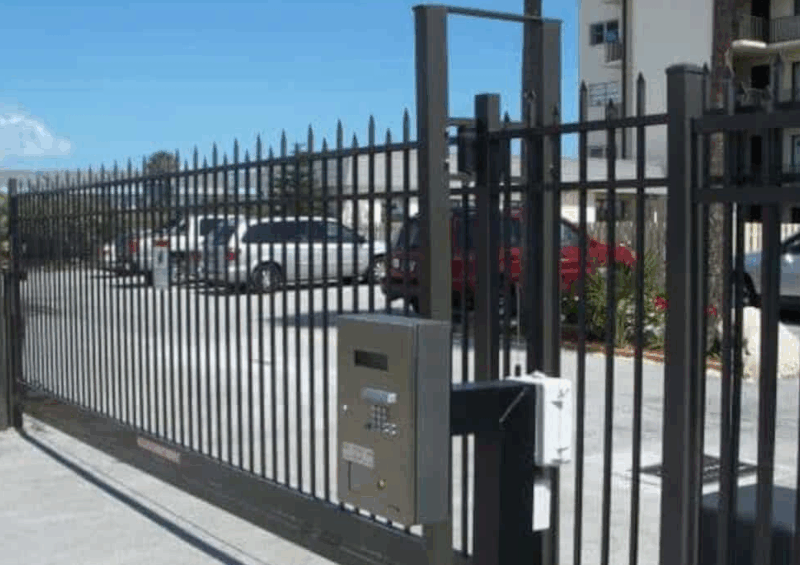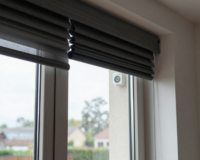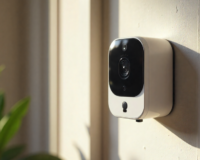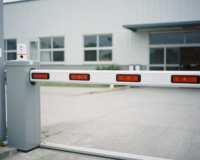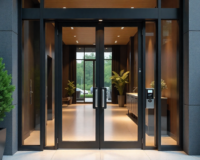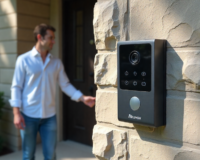In an era where both residential and commercial properties demand higher security and smarter automation, integrating access control with a sliding gate system has become more of a necessity than a luxury. A sliding gate access control setup provides not only convenience but also enhances safety, efficiency, and modern aesthetics. This guide will explain how sliding gate access control systems work, how to choose and connect them, and what to consider for long-term performance and compliance.
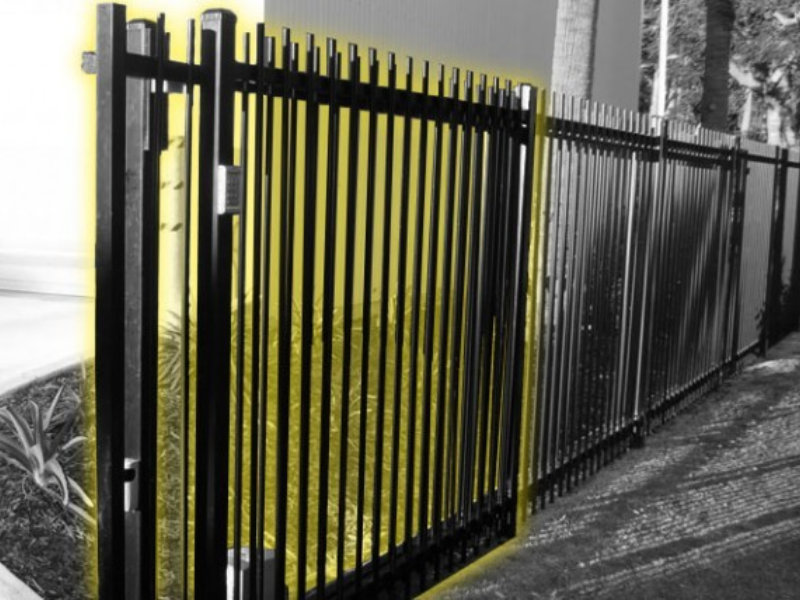
Understanding Sliding Gate Systems
Before integrating access control, it’s important to understand how sliding gate systems function. Unlike swing gates that pivot inward or outward, sliding gates move horizontally along a track or in a cantilever style. This makes them ideal for areas with limited driveway space or uneven terrain. There are generally two types of sliding gates: tracked gates, which roll on a ground rail, and cantilever gates, which remain suspended above the ground without needing a track. Each type has its own mechanical design and installation requirements, but both can be automated and controlled using the same principles.
A sliding gate operator—sometimes called the gate motor—is the heart of the automation system. It’s responsible for driving the gate open and closed, either through a gear rack or chain system. The motor size and power output must be matched with the weight and length of your gate. For instance, residential models may handle up to 500 kg gates, while commercial operators can move heavy-duty gates exceeding 1000 kg. High-quality operators come with features like soft start/stop, adjustable speeds, obstacle detection, and manual release for emergencies.
Equally important are the supporting mechanical components: wheels, rollers, guide posts, end stops, and anti-lift brackets. These ensure smooth operation and prevent misalignment or derailment. A poorly installed or unbalanced gate can damage the operator and cause access control malfunctions, so it’s essential that the gate itself is in perfect working order before any integration.
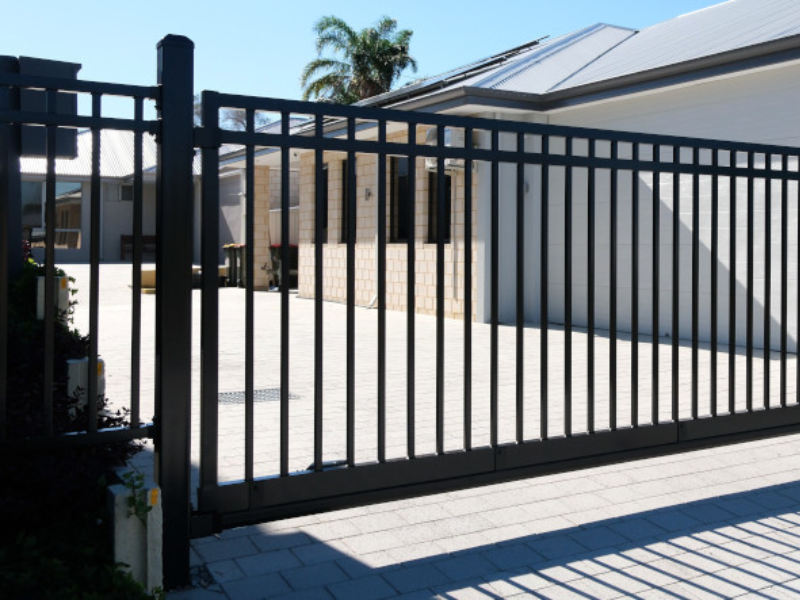
What Is Sliding Gate Access Control?
Sliding gate access control refers to the combination of an automated gate with a system that manages who can open it, when, and how. Instead of relying on manual remotes or keys, access control systems allow authorized users to operate the gate through electronic credentials, while preventing unauthorized entry.
These systems can include a range of technologies. The most common are keypads that require PIN codes, RFID or proximity card readers, remote transmitters, smartphone apps, and video intercoms for visitor management. More advanced setups might use license plate recognition (ALPR), Bluetooth access, or biometric readers for higher security environments.
Each access control unit communicates with the gate operator through a relay or contact input. When an authorized credential is presented, the access system sends a signal to the gate operator’s control board, triggering the “Open” command. From that point, the operator’s internal logic handles the gate’s motion, safety sensors, and automatic closing timer. This integration creates a seamless user experience while maintaining strict access security.
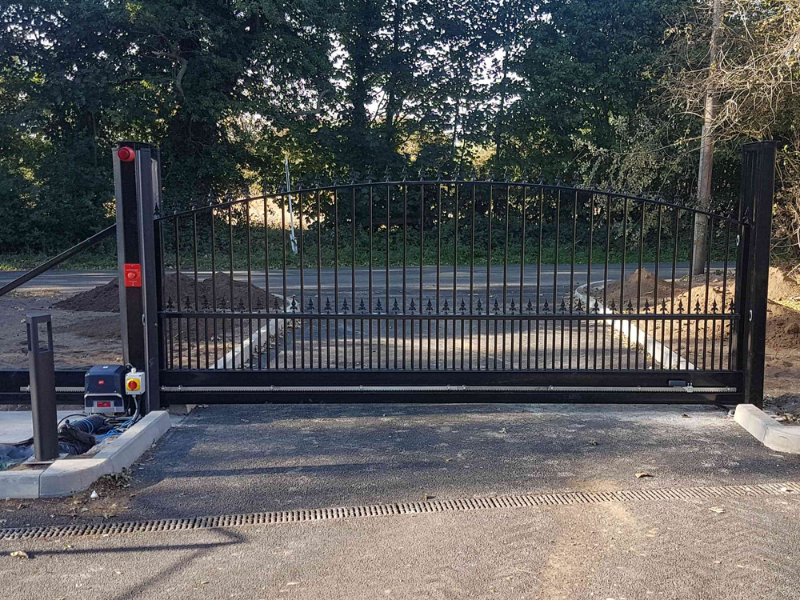
Planning the Integration
The success of a sliding gate access control installation depends heavily on proper planning. The first step is a site survey. Assess the gate’s dimensions, weight, and movement type to ensure compatibility with the chosen operator. Inspect the track or cantilever hardware for wear and alignment issues. Verify that power supply lines and conduits are available for both the gate operator (typically 230 V AC or 110 V AC) and the access control devices (usually 12–24 V DC).
Next, identify safety devices already in place. Modern sliding gates should have photocells, safety edges, or loop detectors that prevent accidents. If these are missing, include them in your plan because disabling or omitting safety features violates most building and industrial safety codes.
Once the mechanical and electrical foundation is confirmed, select the appropriate access control system. The right choice depends on your use case. For residential gates, a simple keypad or RFID reader may suffice. For commercial or industrial gates, consider systems with advanced features like multi-door networking, user tracking, and remote management via cloud software. The key is to choose a system that has a dry-contact output (a relay contact) to integrate easily with your gate operator’s control inputs.
When planning, consider the user flow as well. Will vehicles enter through automatic detection while pedestrians use a separate gate? Will there be both entry and exit points? In complex sites, you might install dual readers—one for entry and another for exit—or integrate with loop detectors to automatically open the gate for outgoing traffic.
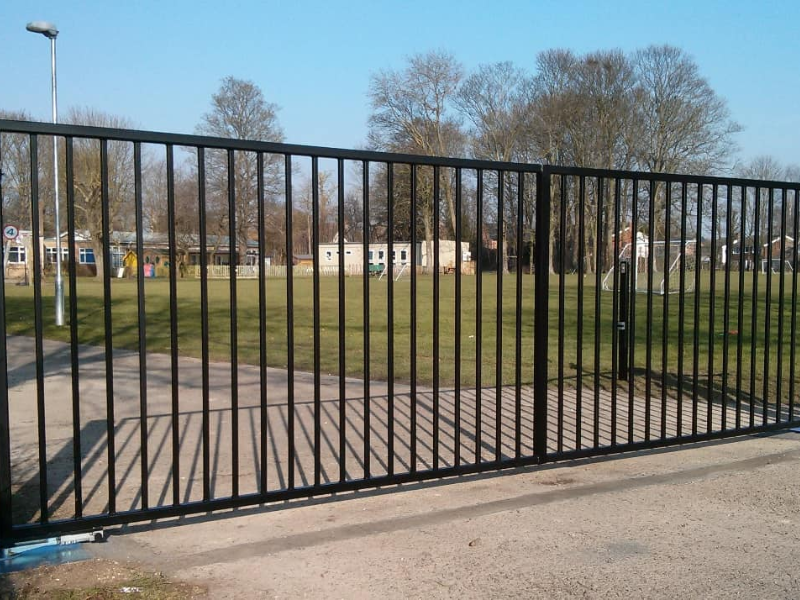
Connecting the Access Control System
After planning, the next step is wiring and installation. Most sliding gate operators have a control board with dedicated terminals labeled Open, Close, or Start. These are low-voltage input points designed to receive signals from external devices like push buttons, remotes, or access control systems.
To integrate, connect the relay output from the access control system to the Open input on the gate operator. When a valid credential is detected, the relay closes briefly, simulating a push-button command and triggering the gate motor to operate. Make sure to follow the operator’s manual precisely, as wire polarity, voltage levels, and terminal labeling can vary between manufacturers.
Use weatherproof enclosures and conduits for outdoor wiring. Many installers mount the access control reader on a pedestal near the gate entrance, connected via shielded cable back to the controller or main control box. Power the access control devices using a regulated power supply and protect all circuits with fuses or surge protectors.
Once the wiring is complete, program the access control system. This includes adding user credentials, defining access schedules, and setting up administrator controls. On the gate operator, configure operating parameters such as opening speed, auto-close delay, and obstacle sensitivity.
Finally, test the system. Present an authorized card or PIN and ensure the gate opens smoothly. Try an unauthorized credential to confirm the gate stays closed. Test safety devices by obstructing the gate’s path to verify it stops or reverses correctly. Don’t skip this stage—thorough testing is the difference between a safe, reliable system and one prone to failure.
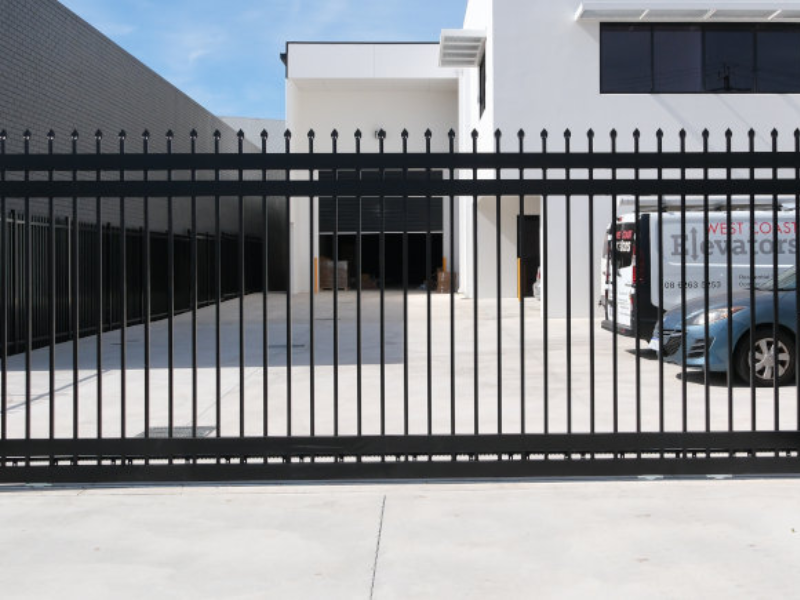
Safety and Compliance
Safety should always come before convenience. When integrating access control with an automated gate, never bypass or disable the safety features built into the operator. The most critical safety devices are photocells, edge sensors, and manual release mechanisms. Photocells detect people or vehicles in the gate’s path and stop movement to prevent injury or damage. Edge sensors detect physical contact and trigger a stop or reversal. Manual release systems allow the gate to be opened manually during power outages or system failures.
In commercial installations, compliance with recognized standards such as UL 325 and ASTM F2200 is mandatory in many regions. These standards define performance and safety criteria for vehicular gates and automation systems. Even in residential setups, following these guidelines ensures user protection and prevents costly liability issues.
It’s also crucial to maintain separation between high-voltage power lines and low-voltage control wiring to prevent interference and electrical hazards. If you’re not confident in electrical work, always hire a certified technician.
Discover our range of Sliding Gate Access Control Systems designed for residential and commercial security.
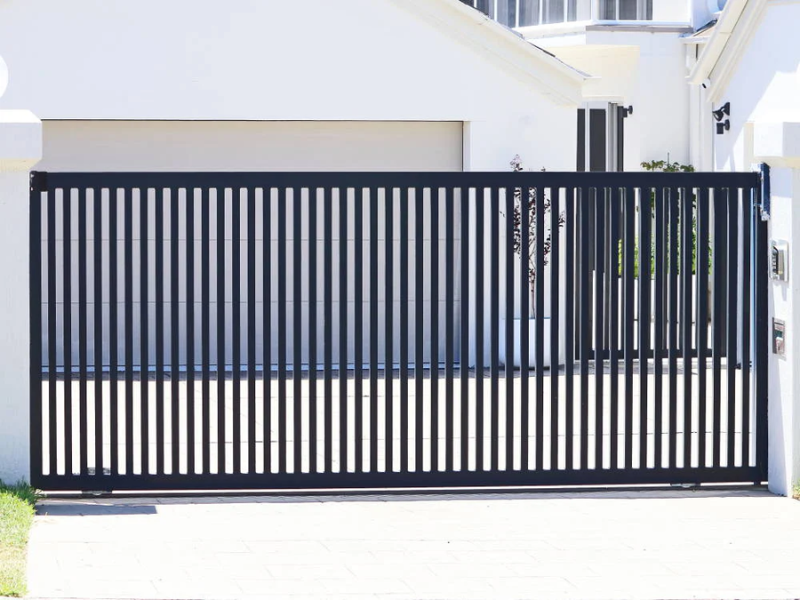
Security and Credential Management
The effectiveness of a sliding gate access control system depends on how securely you manage access credentials. Avoid using outdated fixed-code remotes that can be easily cloned. Instead, opt for rolling-code transmitters, encrypted RFID cards, or mobile app access that use secure authentication protocols.
If you’re managing multiple users, such as tenants or employees, ensure the system supports individual credential management. This allows administrators to add, edit, or revoke access rights without physically reprogramming the device. Cloud-based access control systems are ideal for this, as they offer centralized control and real-time logging of entry events.
For high-security environments, consider multi-factor authentication or integration with a video intercom so security personnel can visually verify visitors before granting access. Some advanced systems use license plate recognition cameras that automatically open gates for registered vehicles.
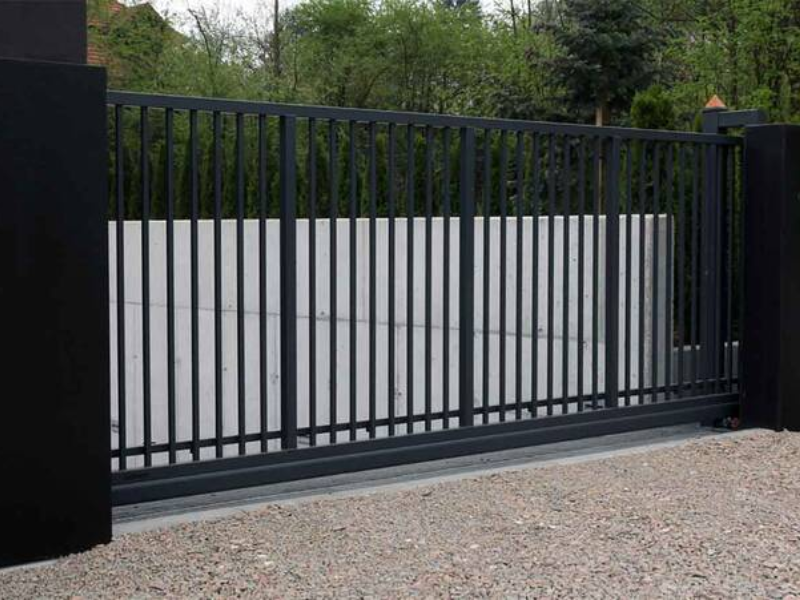
Maintenance and Troubleshooting
Like any mechanical and electronic system, sliding gate access control setups require routine maintenance. Clean and lubricate gate rollers and tracks regularly to prevent friction and strain on the motor. Check alignment of the track and guide posts, and ensure all bolts and mounting brackets are tight. Inspect electrical connections for corrosion or loose terminals, especially in outdoor conditions.
On the access control side, test credentials periodically to confirm system integrity. Update firmware and software when available, especially if your system connects to the internet. If your gate doesn’t open when it should, start troubleshooting by isolating the problem—test the gate operator manually with a push button, then check the access control relay output. Often, wiring errors or power supply issues are the cause.
Common problems include the gate staying open (usually due to stuck relay or loop detector), false obstacle detection (caused by misaligned photocells), or gate not closing automatically (timer settings misconfigured). In case of power failure, always have a manual release key available so you can open or close the gate safely.
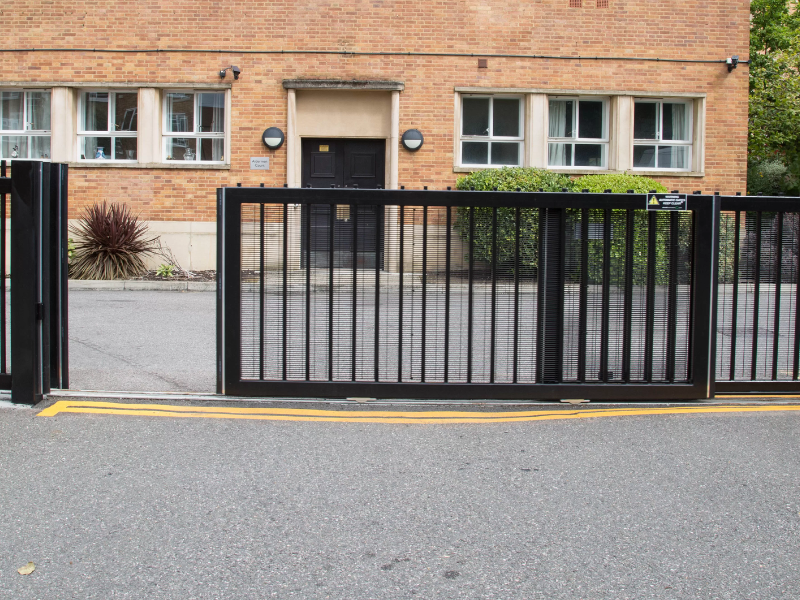
Key Best Practices
To ensure a successful and long-lasting sliding gate access control setup, follow these best practices:
-
Always verify that the gate operator is properly rated for the gate’s weight and dimensions.
-
Never bypass safety sensors or photocells.
-
Use shielded, weather-resistant cables for outdoor installations.
-
Maintain proper grounding and surge protection for all equipment.
-
Regularly test the system to confirm correct operation of both the gate and access control.
-
Keep firmware updated and credentials secure.
-
Document your wiring and configuration for future service or troubleshooting.
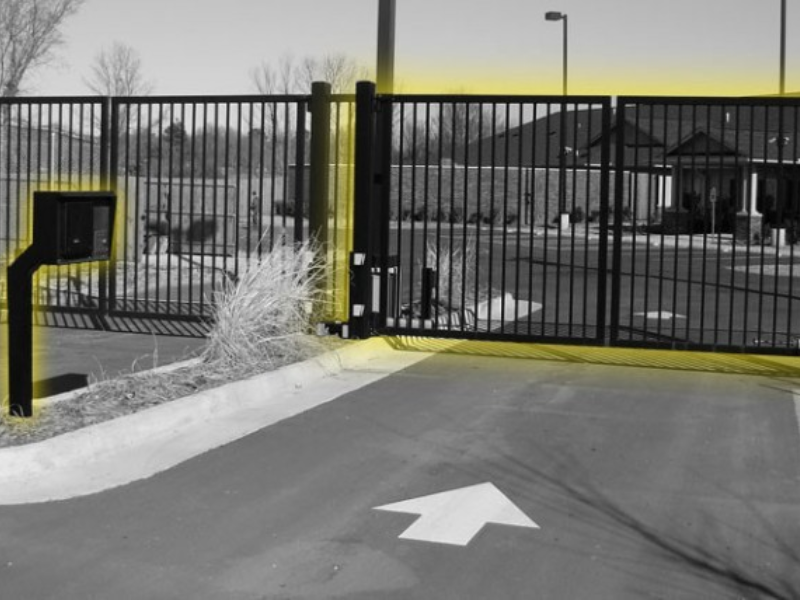
Conclusion
Integrating sliding gate access control into your property provides an intelligent blend of security, automation, and user convenience. Whether you’re managing a residential driveway or a high-security industrial entrance, connecting your access control system to a sliding gate operator ensures that only authorized individuals can enter while maintaining smooth and safe gate operation.
By planning carefully, wiring correctly, and prioritizing both safety and security, you can achieve a professional-grade installation that enhances your property’s value and protection. With regular maintenance and modern technology, your sliding gate access control system will serve you reliably for many years to come.
Want to upgrade your gate? Check out our full guide on Solar Sliding Gate Automation for a sustainable security solution.

